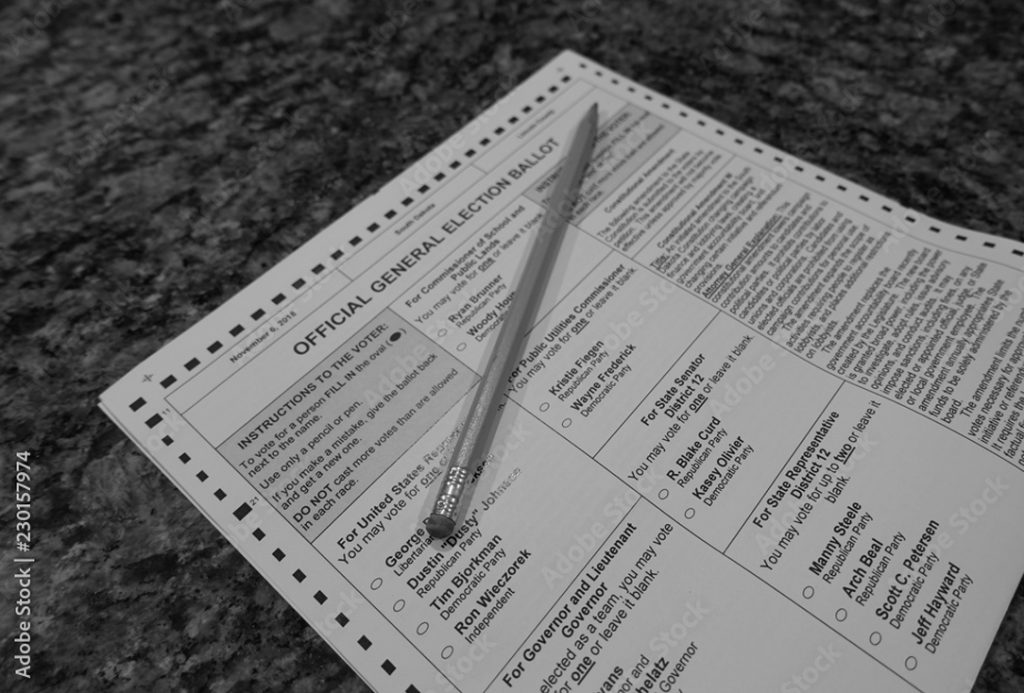Logic and Accuracy Testing
What Is It?
Logic and accuracy (or L&A) testing is the process of testing and certification of election equipment, where the county clerks’ offices in each of New Mexico’s 33 counties verify that the vote counting equipment the county plans to use for an upcoming election is functioning as intended.
Equipment must be reprogrammed by humans before every new election; logic and accuracy testing helps to ensure that any errors in the reprogramming process can be identified and corrected before the election takes place. Most errors detected during testing are human errors related to this reprogramming process. Testing validates that the voting system can correctly process voters’ choices and is able to both accurately record and report the vote totals. Known results from a set of test ballots are compared to the report of results obtained from a live test on a given voting machine.
Testing may take a day to several weeks depending on the size of the county and the number of pieces of voting equipment that must be rigorously reviewed. Under New Mexico state law, this process may begin as early as 42 days before an election and, “[t]he process of preparing, inspecting, certifying and sealing electronic voting machines shall be open to observation by the public.”[1] This is an important transparency measure that helps to ensure public confidence in the testing process, providing voters with an opportunity to see the equipment and pose questions to election officials about how it was selected, certified, tested, and will be used.

During testing, every ballot “style,” or specific combination of contests that can appear on a voter’s ballot in that county, is tested to ensure that the ballots correctly list all candidates and contests. Testing also ensures that votes for each and every ballot style are correctly counted by the tabulators or vote counting equipment, and that the tabulators are handling nonstandard votes (like overvotes or blank ballots) as intended.
[1] Oliver, M. (n.d.). Election Handbook of the State Of New Mexico 2023 Edition. Retrieved March 24, 2025, from https://api.realfile.rtsclients.com/PublicFiles/ee3072ab0d43456cb15a51f7d82c77a2/c5ceeb07-9546-4517-a7a1-be60a2094578/NM_Election_Handbook_SOS-2023.pdf, 1-11-5. Voting device; preparation; certification, pg. 158.
What Are we Observing/Looking For?
When ONME watchers observe Logic and Accuracy Testing, we look for the following:
- Testing procedures
- Testing results
- Testing environment
Testing Procedures
To ensure that each and every vote cast during the election is counted accurately, it is important that equipment, pollbooks, and filled in ballots are properly tested. ONME asks its watchers to observe whether the following functionalities were tested and/or if they did not or were unable to observe, to ask election officials whether the following were tested:
- Central count vote tabulation machines
- Tabulators for use in polling locations
- Accessible voting systems/ballot marking devices
- Electronic pollbooks
- Printing zero reports
- Test decks
- Ballots including:
- Blank or undervoted
- Write-in candidates
- Overvoted
- All ballot styles used in the county
- Unusual ballot cases
- Out-stacking functionality (ability of machines to set aside ballots that need to be interpreted by humans)
- Whether officials secured and retained ballots after testing
Testing Results
ONME also asks its watchers to observe what the results of the testing shows. This includes the following:
- Generation of summary reports at the end of testing equipment
- (Not) encountering any unexpected errors
- Equipment certification for election usage
- Clearing and resetting equipment after testing
- Sealing equipment with a metal seal after testing
- Recording the metal seal number
- Recording the reading on protective counter
- Sealing and retaining the test printout(s)
Testing Environment
Similarly to all other aspects of the election ONME observes, we ask our watchers to note down any incidents of harassment, intimidation, violence, disruptions, and interference that may hinder the testing process. Additionally, we also note whether any other observers were present, including from political parties, the public, the media, and others.
Why Is it Important?
Testing validates that the voting system can correctly process voters’ choices and is able to both accurately record and report the vote totals.
What we found in 2024
What Went Well
- Testing was orderly and transparent in most counties. Observers saw staff carefully running test ballots and documenting results.
- Errors were rare and usually resolved. In most counties, machines worked as expected or issues were quickly corrected.
- Staff were available to answer questions. In nearly all sites, officials explained what was happening when asked.
Challenges
- Public access varied. Only about one-third of sites had clear signage, and not all provided handouts or explanations for members of the public.
- One county restricted access. In Sandoval County, an observer was told to obtain a special ID and missed much of the process.
- Citizen disruptions. In Socorro County, outside observers interrupted the process and challenged staff, leading to confusion and delays. However, the vast majority of sites conducted testing with no disruptions.
Contact Us
The mission of Observe New Mexico Elections is to increase transparency and trust in New Mexico’s elections by training and deploying nonpartisan election observers throughout the state. Observers will report on how election laws and procedures are followed, representing all voters without interfering in the electoral process. Findings from their observations will be compiled to assess the overall quality of elections in New Mexico.
